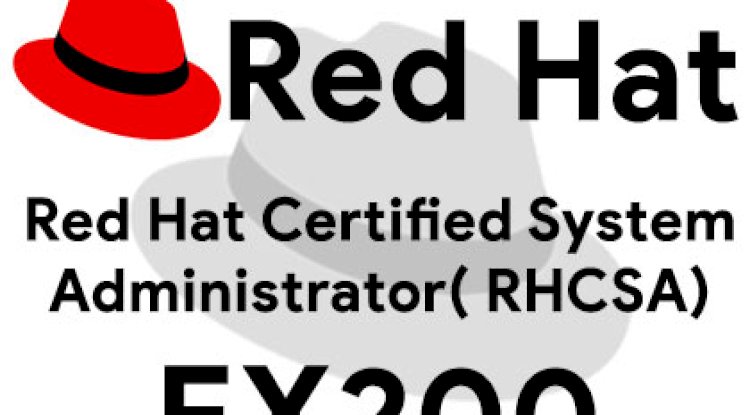The Rise of AI in Reconnaissance and Data Gathering | How Artificial Intelligence is Transforming Intelligence Collection, Cybersecurity, and Surveillance
Artificial Intelligence (AI) is transforming reconnaissance and data gathering, enabling intelligence agencies, cybersecurity experts, and businesses to collect, analyze, and interpret vast amounts of data with unprecedented speed and accuracy. AI-powered tools can scan social media, news sources, and dark web forums, detect cyber threats in real-time, and enhance surveillance through facial recognition and biometric analysis. While AI offers immense benefits in cybersecurity, intelligence gathering, and corporate security, it also raises ethical concerns regarding privacy, misuse by cybercriminals, and AI bias. This blog explores how AI is revolutionizing reconnaissance, the challenges it presents, and the future trends shaping AI-powered intelligence collection.

Table of Contents
- Introduction
- How AI is Revolutionizing Reconnaissance & Data Gathering
- Benefits of AI in Reconnaissance and Data Gathering
- Challenges and Ethical Concerns of AI in Reconnaissance
- Future Trends in AI-Powered Reconnaissance
- Conclusion
- FAQs
Introduction
In today's digital age, Artificial Intelligence (AI) is revolutionizing reconnaissance and data gathering, transforming how intelligence agencies, cybersecurity experts, businesses, and even malicious actors collect and analyze information. Traditional reconnaissance relied on manual efforts, taking significant time and resources. However, with the advent of AI-powered reconnaissance tools, automation has streamlined data collection, analysis, and pattern recognition, making intelligence-gathering more efficient and accurate.
From open-source intelligence (OSINT) and cyber threat monitoring to deepfake detection and corporate espionage, AI is reshaping how we acquire and interpret data. However, AI-driven reconnaissance also raises concerns about privacy, ethical boundaries, and potential misuse. In this blog, we will explore how AI is transforming reconnaissance and data gathering, its key applications, challenges, and what the future holds.
How AI is Revolutionizing Reconnaissance & Data Gathering
AI's ability to process vast amounts of data at high speed has changed the landscape of reconnaissance. By leveraging machine learning (ML), natural language processing (NLP), and computer vision, AI-driven reconnaissance tools can extract insights from structured and unstructured data sources in real-time.
Key Capabilities of AI in Reconnaissance
Automated OSINT (Open-Source Intelligence) Gathering
AI-powered tools can scan social media, news websites, public databases, and even the dark web to extract valuable intelligence. By analyzing text, images, and metadata, AI can quickly identify patterns and trends.
Facial Recognition & Biometrics
AI-driven reconnaissance utilizes computer vision and facial recognition technology to track individuals across public and private databases. Law enforcement agencies use these tools for surveillance, while businesses apply them for security and authentication.
AI-Powered Cyber Threat Intelligence
Cybersecurity experts rely on AI-driven threat intelligence platforms to monitor and predict cyberattacks. These tools analyze hacker forums, phishing campaigns, and malware trends to detect potential security breaches before they occur.
Deepfake & Misinformation Detection
With the rise of AI-generated deepfakes and misinformation campaigns, AI is also being used to detect manipulated content, ensuring the authenticity of digital assets.
Automated Satellite & Drone Surveillance
AI enhances geospatial intelligence (GEOINT) by analyzing satellite images and drone footage to detect movement patterns, infrastructure changes, and possible security threats.
Voice & Speech Recognition for Intelligence Gathering
Government agencies and corporations use AI-powered speech analysis to monitor phone calls, video conferences, and voice recordings, extracting insights from tone, keywords, and speech patterns.
Benefits of AI in Reconnaissance and Data Gathering
- Faster Intelligence Processing: AI can analyze massive datasets in real-time, reducing the time required for intelligence gathering.
- Improved Accuracy & Pattern Recognition: AI minimizes human error by detecting anomalies and hidden patterns in data that might be overlooked by human analysts.
- Scalability: AI-driven reconnaissance systems can handle vast amounts of data across multiple platforms simultaneously.
- Enhanced Threat Detection: AI continuously learns from evolving threats, making it highly effective in cybersecurity and counterintelligence operations.
- Reduced Human Effort: Automation reduces the need for manual data collection, freeing up intelligence personnel for strategic decision-making.
Challenges and Ethical Concerns of AI in Reconnaissance
Despite its advantages, AI-driven reconnaissance comes with ethical dilemmas and security challenges:
Privacy Invasion
AI-powered reconnaissance tools raise concerns about mass surveillance, data scraping, and unauthorized data collection, often infringing on individuals' privacy rights.
Bias in AI Algorithms
AI models are only as good as their training data. If biased data is used, AI reconnaissance systems may produce discriminatory or inaccurate results.
Misuse by Malicious Actors
While AI helps in cybersecurity, hackers and cybercriminals also leverage AI to automate phishing attacks, deepfake scams, and misinformation campaigns.
Over-Reliance on AI
Intelligence agencies and businesses must balance AI automation with human oversight, ensuring that critical decisions are not solely made by AI-driven analytics.
Legal & Ethical Boundaries
Many countries are still developing regulations for AI-driven reconnaissance, raising legal questions about surveillance, data ownership, and AI-powered espionage.
Future Trends in AI-Powered Reconnaissance
The future of AI-driven reconnaissance and data gathering is evolving rapidly. Some emerging trends include:
AI-Driven Predictive Intelligence
AI will move beyond just gathering data—it will predict threats before they happen, enabling proactive decision-making.
Quantum Computing & AI for Reconnaissance
The integration of quantum computing with AI will allow for even faster and more complex intelligence processing.
Blockchain-Based Data Verification
To counter misinformation and deepfake threats, AI will integrate with blockchain technology for data authenticity verification.
Advanced AI-Powered Deepfake Detection
New AI models will analyze micro-expressions, speech inconsistencies, and digital fingerprints to detect even the most sophisticated deepfakes.
Improved AI Ethics & Regulations
Governments and organizations will work towards stricter AI ethics guidelines and legal frameworks to regulate AI-powered reconnaissance.
Conclusion
AI has significantly transformed reconnaissance and data gathering, enhancing cybersecurity, intelligence operations, business strategies, and investigative journalism. While AI-driven reconnaissance offers incredible speed, accuracy, and automation, it also raises concerns about privacy, misuse, and ethical boundaries.
To maximize AI’s potential while minimizing risks, businesses, governments, and cybersecurity experts must implement strong ethical guidelines, transparency measures, and AI-human collaboration. As AI continues to evolve, its role in intelligence gathering will only become more powerful, shaping the future of digital security and surveillance.
FAQs
How is AI used in reconnaissance and intelligence gathering?
AI is used in reconnaissance to automate data collection, analysis, and pattern recognition, enabling intelligence agencies to monitor online activities, detect cyber threats, and analyze large datasets efficiently.
What role does AI play in OSINT (Open-Source Intelligence)?
AI-powered OSINT tools scan public data sources like social media, news websites, and government databases, extracting valuable intelligence for cybersecurity, corporate investigations, and law enforcement.
How does AI enhance cybersecurity reconnaissance?
AI improves threat detection, network monitoring, and anomaly identification, helping organizations detect cyberattacks before they cause damage.
Can AI detect deepfake content used in misinformation campaigns?
Yes, AI-driven tools use deep learning and facial recognition algorithms to identify deepfake videos, images, and audio, preventing the spread of misinformation.
How does AI-powered surveillance work?
AI enhances surveillance by using facial recognition, biometric authentication, and real-time object detection, allowing security agencies to track individuals and monitor potential threats.
Is AI being used for military intelligence gathering?
Yes, AI assists in geospatial analysis, drone surveillance, satellite imagery interpretation, and predictive intelligence for military operations.
What are AI-powered reconnaissance tools?
These are software applications that automate data collection and analysis using AI, including threat intelligence platforms, OSINT tools, and facial recognition systems.
How does AI help in social media monitoring for intelligence gathering?
AI scans social media platforms for keywords, trends, and behavioral patterns, helping identify cyber threats, political risks, and misinformation.
Can AI predict cyber threats before they occur?
Yes, AI-driven threat intelligence systems use predictive analytics to identify potential cyber threats based on past attack patterns and real-time data.
How do hackers use AI for reconnaissance?
Cybercriminals use AI to automate phishing attacks, analyze vulnerabilities, and create deepfake identities for fraud and espionage.
What are the ethical concerns of AI in reconnaissance?
Key ethical issues include privacy invasion, mass surveillance, AI bias, and potential misuse by authoritarian regimes or cybercriminals.
How does AI assist in satellite and drone surveillance?
AI analyzes satellite images and drone footage to detect movement patterns, monitor borders, and track environmental changes.
Can AI be used to track individuals online?
Yes, AI-powered facial recognition and behavioral analysis tools can track individuals across social media, CCTV networks, and public databases.
How does AI improve corporate intelligence gathering?
Businesses use AI for competitive analysis, brand monitoring, cybersecurity, and insider threat detection.
What is the role of NLP (Natural Language Processing) in AI reconnaissance?
NLP helps AI analyze text-based data from social media, emails, and news sources, extracting relevant intelligence insights.
How does AI help in misinformation detection?
AI detects fake news, manipulated media, and propaganda content by analyzing linguistic patterns, image inconsistencies, and source credibility.
Can AI detect insider threats in organizations?
Yes, AI monitors employee behavior, access logs, and communication patterns to identify potential insider threats.
What are the best AI tools for reconnaissance?
Some leading AI tools for reconnaissance include Maltego, OSINT Framework, IBM X-Force, Recorded Future, and Google Jigsaw.
How is AI used in cyber warfare?
AI is used in cyber warfare for automated hacking, threat prediction, digital espionage, and malware development.
Can AI be used for counterintelligence?
Yes, AI helps in counterintelligence by detecting espionage threats, securing sensitive data, and tracking suspicious activities.
How does AI-powered biometrics improve security?
AI-driven biometric systems use fingerprint scanning, facial recognition, and voice authentication for secure identity verification.
What are the risks of AI in intelligence gathering?
Risks include data privacy concerns, potential misuse by cybercriminals, biased AI models, and over-reliance on automation.
How do law enforcement agencies use AI for investigations?
Law enforcement uses AI to analyze crime data, identify suspects, monitor online activities, and predict criminal behavior.
Can AI detect fraudulent identities and fake accounts?
Yes, AI uses machine learning and behavioral analytics to detect fake profiles, bots, and fraudulent activities.
What is predictive intelligence in AI reconnaissance?
Predictive intelligence uses AI algorithms to forecast threats and anomalies based on historical and real-time data.
How does AI automate reconnaissance for cybersecurity?
AI-driven cybersecurity tools scan networks, endpoints, and online platforms for vulnerabilities and suspicious activity.
Can AI-powered reconnaissance tools be used for financial fraud detection?
Yes, AI helps detect money laundering, transaction fraud, and identity theft by analyzing financial behavior patterns.
Will AI replace human intelligence analysts in reconnaissance?
AI will enhance intelligence gathering but will not replace human analysts, as human oversight is necessary for ethical and strategic decision-making.
What is the future of AI in reconnaissance?
AI will continue to evolve, integrating quantum computing, blockchain for data security, and advanced deepfake detection, making intelligence gathering even more powerful.











![Top 10 Ethical Hackers in the World [2025]](https://www.webasha.com/blog/uploads/images/202408/image_100x75_66c2f983c207b.webp)



![[2025] Top 100+ VAPT Interview Questions and Answers](https://www.webasha.com/blog/uploads/images/image_100x75_6512b1e4b64f7.jpg)







